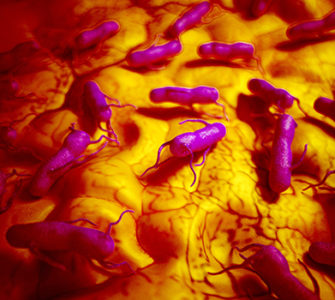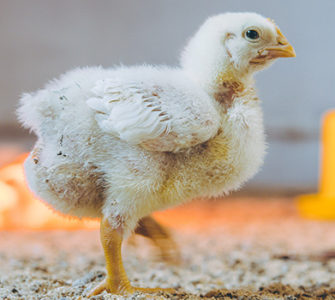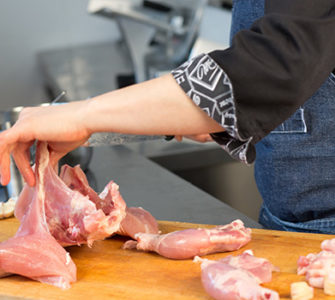When vaccinating broilers against Salmonella may be worthwhile
Vaccinating broilers is a big investment and may not be needed on all farms, but it can be a worthwhile move if there are high loads of Salmonella coming into the processing plant or an increase in the types of Salmonella that threaten human health, according to Manuel Da Costa, DVM, PhD, associate director for outcomes research, Zoetis.
Most US poultry companies are routinely vaccinating their breeders for Salmonella — a big change from 2010, when 69% of breeders were left unvaccinated.1 That trend is now spilling over to the broiler sector as poultry companies seek further reductions in Salmonella so they can comply with performance standards set by USDA’s Food Safety and Inspection Service (FSIS), Da Costa told Poultry Health Today.
Broilers are especially vulnerable to Salmonella colonization their first few days of life, and vaccinating them with a live vaccine creates competitive exclusion with wild-type Salmonella. The vaccine used should protect and cross-protect against serotypes of the pathogen of concern to human health, he said.
Salmonella vaccine studies
Da Costa and colleagues have conducted studies to evaluate the impact of vaccinating day-old broilers with a modified-live S. Typhimurium vaccine.
When vaccinated broilers were challenged at 4 or 5 days of age, there was a reduction in the Salmonella load even though there wasn’t much time for a response to the vaccine, a finding Da Costa said was “encouraging.” The loads of S. Enteritidis and S. Kentucky, for example, declined over the first 2 to 3 weeks following the S. Typhimurium vaccine.
When birds were challenged at 34 to 35 days of age, “we got really good cross-protection against group Cs,” he said, the Salmonella category that includes S. Infantis and S. Kentucky (Table 1). A decline was also found with S. Heidelberg, another Salmonella serotype that can cause human illness.
Although S. Kentucky isn’t considered a major threat to human health, Da Costa noted, it’s important to poultry companies because any type of Salmonella found by FSIS can count against a processing plant.
[Editor’s addition:]
Table 1. Examples of serotypes and their serogroups
| Serogroup B | Serogroup C | Serogroup D |
| S. Typhimurium | S. Infantis | S. Enteritidis |
| S. Heidelberg | S. Kentucky |
Asked about the best time to vaccinate broilers against Salmonella, he recommended spray-vaccinating chicks at the hatchery, then following up with a field boost administered in water at 14 days of age. This protocol should provide protection through the end of the production cycle.
Da Costa emphasized that vaccination of breeders against Salmonella should not be curtailed if broiler vaccination is initiated. “You will want to have the strongest breeder program…” which usually involves a combination of live, killed and autogenous Salmonella vaccines. Once immunized against Salmonella, hens also transfer maternal immunity to their progeny, but broiler vaccination is still recommended if the Salmonella pressure is high.
Interestingly, in controlled studies and field trials, he added, broilers vaccinated against Salmonella tended to show an improvement in feed conversion of about 2 points (0.02). Da Costa theorizes that even if Salmonella isn’t pathogenic to birds, it might have a subclinical effect that vaccination helps alleviate.
1 Rennier Associates.
Posted on July 9, 2019

















